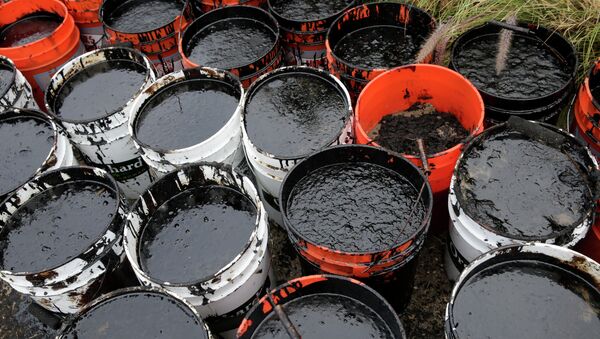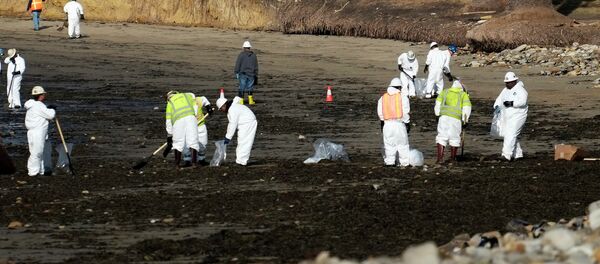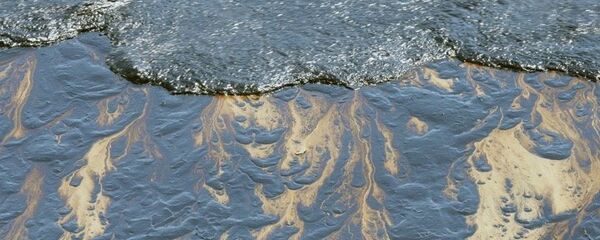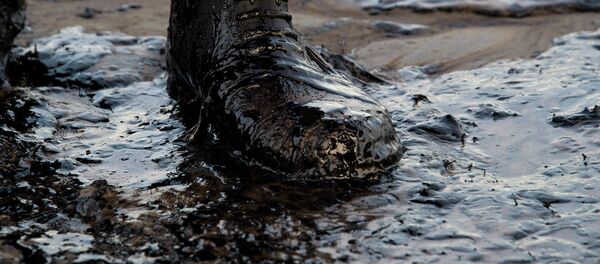Plains will have to perform a "root-cause analysis" of the spill that examines "every contributing factor" in the incident, said Linda Daugherty, a deputy associate administrator for the agency. Inspection results will also have to be independently reviewed.
Meanwhile, the Texas-based company may also face criminal charges, as government prosecutors open an investigation into the spill, Reuters reports. Santa Barbara's district attorney, Joyce Dudley said she would work with federal authorities to "look into potential criminal and/or civil prosecution."
— Shelby Grad (@shelbygrad) May 19, 2015
PHMSA's corrective action order said that there had recently been an inspection of the 10.6-mile line, the results of which have yet to be analyzed, but that a 2012 inspection found 41 anomalies, mostly due to corrosion, and often around welding points. According to the company, there have been no previous problems with this pipeline.
If the agency's corrective action order is found to violated, the agency said it would issue a strong enforcement action order.
Plains told reporters Thursday that the company will have to wait to remove the damaged section of pipeline until it can do so in the presence of federal regulators and a third party, as mandated by law.
The cause of Tuesday's spill — about 20 miles to the west of the city of Santa Barbara — is still under investigation, and Plains has said it could take weeks or even months to fully uncover what happened.
"We were having some pump problems on the pipeline," said Plains representative Rick McMichael. "Whether it led to the leak or not is part of our investigation."
The line usually carries 1,200 barrels of oil an hour from an Exxon Mobile processing plant hundreds of miles to a distribution hub in Bakersfield, Calif.
— Kenny Holmes (@KHOLMESlive) May 20, 2015
Beautiful Beaches, Fragile Fauna
As estimates surfaced Wednesday that up to 105,000 gallons of oil had spilled into a ditch near the coast in Santa Barbara County, Governor Jerry Brown declared a state of emergency.
— SB Channelkeeper (@SBChannelkeeper) May 22, 2015
It is estimated that about one fifth of the oil that spilled into a coastal culvert made it into the waters at Refugio State Beach, a rare ecosystem and a habitat for a dizzying variety of species including sea lions, lobsters, octopus, and the brown pelican, which spent about 50 years on the endangered species list until 2009.
— Gretchen Wenner (@GretchenWenner) May 21, 2015
— Audubon California (@AudubonCA) May 21, 2015
Two state beaches in the area are closed in the run up to what is typically a very busy holiday weekend. A fishing ban has gone into effect for a mile up and down the coast and for a half-mile out to sea.
— CA State Parks (@CAStateParks) May 20, 2015
Responders at all levels of government, including the Coast Guard, US Environmental Protection Agency, California Department of Fish and Wildlife, and Santa Barbara Office of Emergency Management have joined volunteers to try to clear the oil from the beach and water's surface.
— Brian van der Brug (@bvdbrug) May 21, 2015
The clean up efforts — which brought out more volunteers than officials could effectively coordinate — stalled somewhat on Friday as high winds whipped up the oil-slicked waters with waves up to four feet high.
— City of Goleta PIO (@GoletaPIO) May 22, 2015
An estimated 700 people turned out Friday to help haul bucketloads of strong smelling, black sludge out of the water and off of the beach, in what US Coast Guard Capt. Jennifer Williams called a "overwhelming" response.
By Thursday night 9,500 gallons had been collected from the water's surface by a fleet of 18 vessels, according to Plains.
— Kelsey Gerckens KEYT (@KEYTNC3Kelsey) May 22, 2015
'Flying Blind' With Insufficient Oversight
Plains All American and its subsidiaries have had at least 223 accidents since 2006, and have been subject to at least 20 federal enforcement actions. The company operates over 6,000 miles of pipeline in 20 states, managing 4 million barrels of crude a day.
The Santa Barbara Independent reported that Plains avoided county-level oversight because of a legal victory won 20 years ago. The inspections mentioned by PHMSA were federal-level operations.
"We’re flying blind," the county energy division director, Kevin Drude, told the Independent.
Najmedin Meshkati, a professor of civil and environmental engineering at the University of Southern California told the Guardian that the incident highlights the insufficient and locally variable regulatory framework in California.
"This is yet one more testament that in light of lax or nonexistent oversight it is the company’s own proactive safety culture that is the last resort for protecting the public and environment," she said.
— Kenny Holmes (@KHOLMESlive) May 20, 2015
The location of the current spill is, incidentally, not far from the site of the first major oil spill in US history. In 1969, Santa Barbara saw 4.2 million gallons of crude spill into coastal waters from an offshore Union Oil platform. Images of the disaster horrified Americans across the country and added to the surge of activism that would become the modern environmental movement.
— SBDiningDestinations (@DineDestination) April 22, 2015
The 1969 spill is still the third worst in US history after the 1989 Exxon Valdez and 2010 Deepwater Horizon spills. As a result, the area has a long, fierce tradition of environmental action.
— Daniel M. Jimenez (@DMJreports) May 19, 2015
"Santa Barbara is probably the single worst location on the planet anybody could choose for an oil spill," UC Santa Barbara political science professor Eric Smith told Reuters.
"Since the '69 spill, people have just been waiting to pounce on the oil industry. To have the spill here, this company is profoundly unlucky."
— Antonia Juhasz (@AntoniaJuhasz) May 7, 2015





